A Night with Georgetown University Wargaming
By Mitch Reed
Recently I accepted an invite from Professor Sebastian Bae to attend the “finals” for his wargaming class at Georgetown University. This marks my second time helping him out, last spring I headed up to the US Naval Academy to do the same thing with his Midshipmen. What better way to have a final exam than to play some of the games his students worked on this semester. Wargaming classes are popping up all over in places such as the US, Canada and the UK, just to name a few countries. Too many of our dedicated readers, the fact that you can take a class in wargaming may seem like an amazing class to take. It is amazing however, it is not an easy “A”, especially with the standards Sebastian sets for his students.
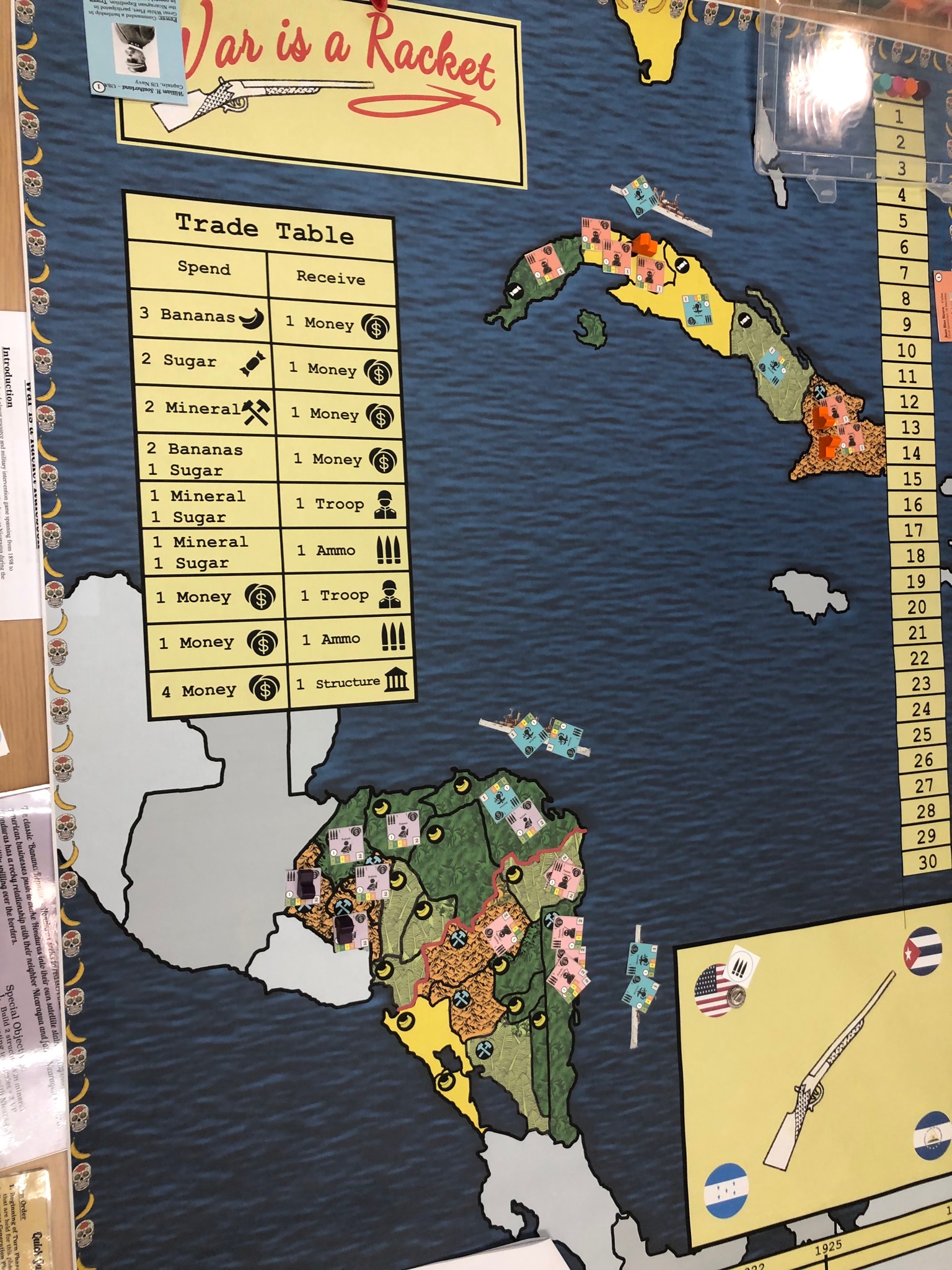
The graduate-level course is a part of Georgetown’s Center for Security Studies and is described in the course listing as follows.
This course provides a basic introduction to the field of wargaming, emphasizing its use in military strategy and defense policy. The course will examine the fundamental principles of wargaming and game design. Students will be exposed to a range of design philosophies, varying in purpose, style, and format. The course centers on student teams researching, designing, developing, and play-testing an original educational wargame on a topic related to military strategy. Course instruction will be a combination of lecture, gameplay, and discussion – drawing upon both professional and commercial wargames.
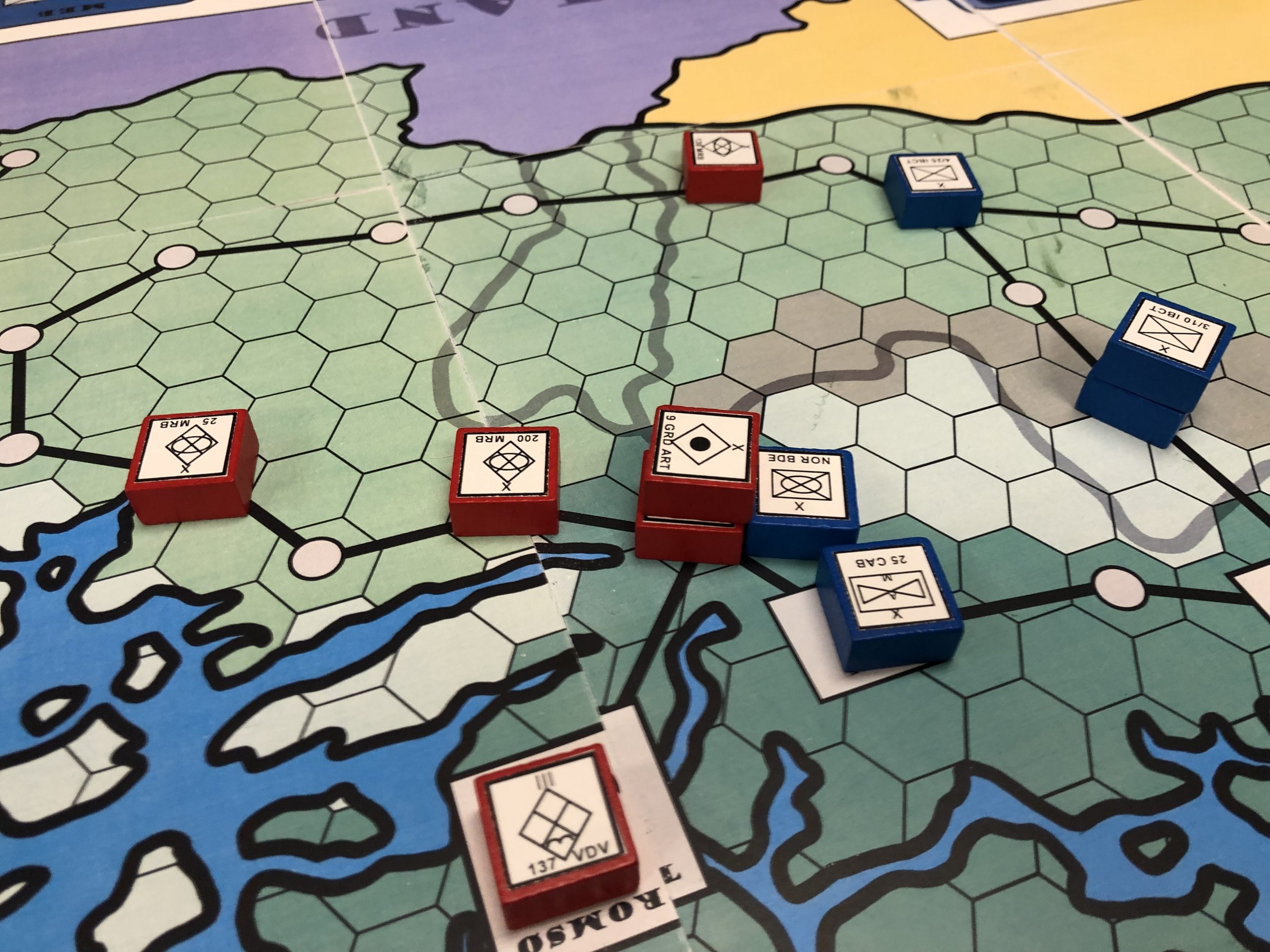
Most of the students who take the elective are pursuing advanced degrees in national security and policy and hope to use this experience to find positions in the defense industry. Some of the students are already defense analysts and are trying to get a better understanding of wargaming and to put more tools in their professional toolbox.
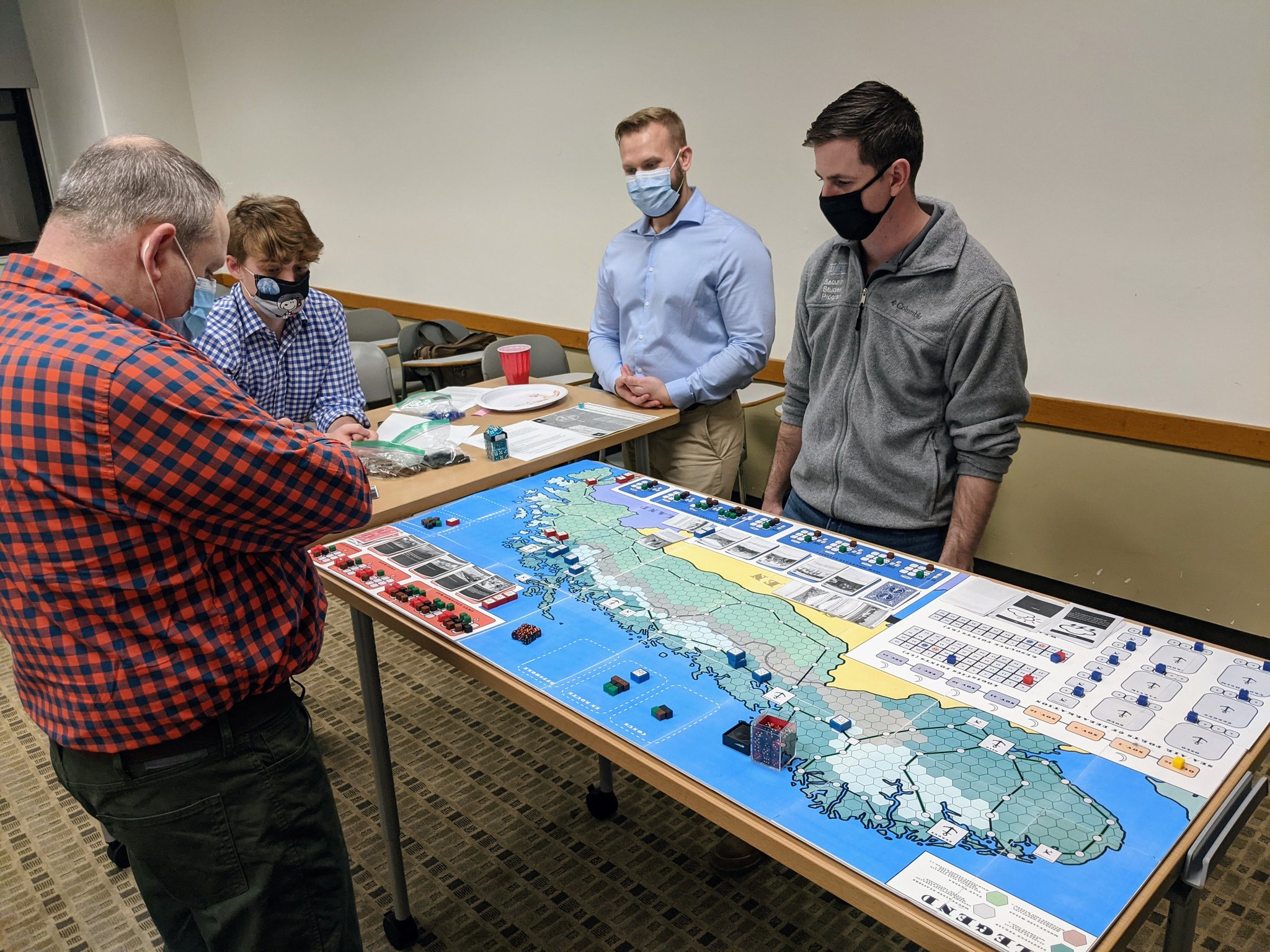
The event featured four games the students worked on during the semester and Sebastian invited some big names in the local area to play and comment on the games.
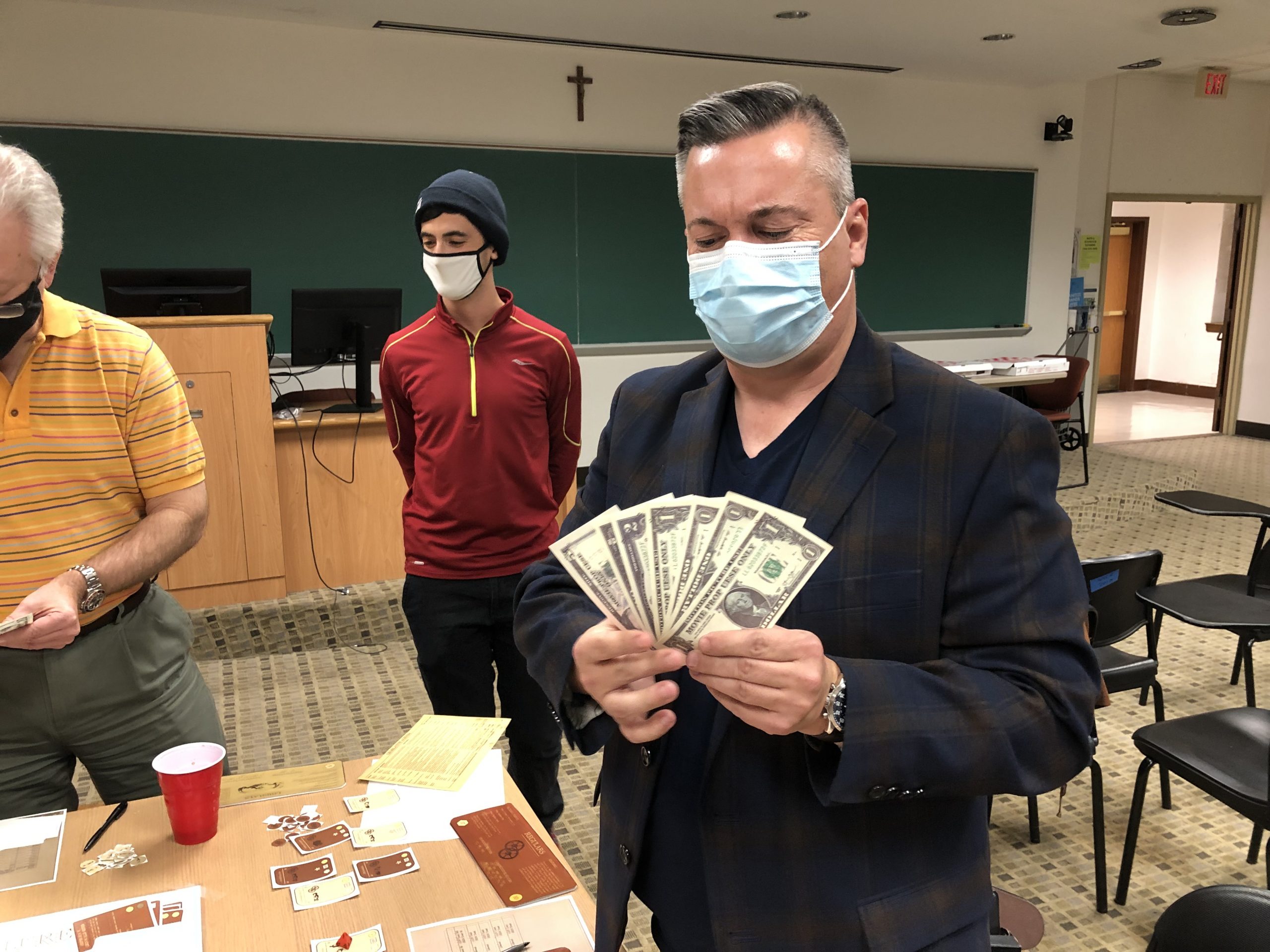
Attending the event were award-winning game designers such as Volko Ruhnke (Fire in the Lake, Labyrinth), Jason Matthews (Twilight Struggle, 1960), and Kevin Bertram (Shores of Tripoli, Votes for Women) alongside a host of wargamers from places such as RAND, Center for Army Analysis and the Center for Naval Analysis. Each of the guests was assigned to one of the four games where the student designers taught their designs and had the guests play their games.

The four games featured at this event varied in scope, scale, and historical period. The games featured at this event are best described by the designers themselves and were taken from their journals.
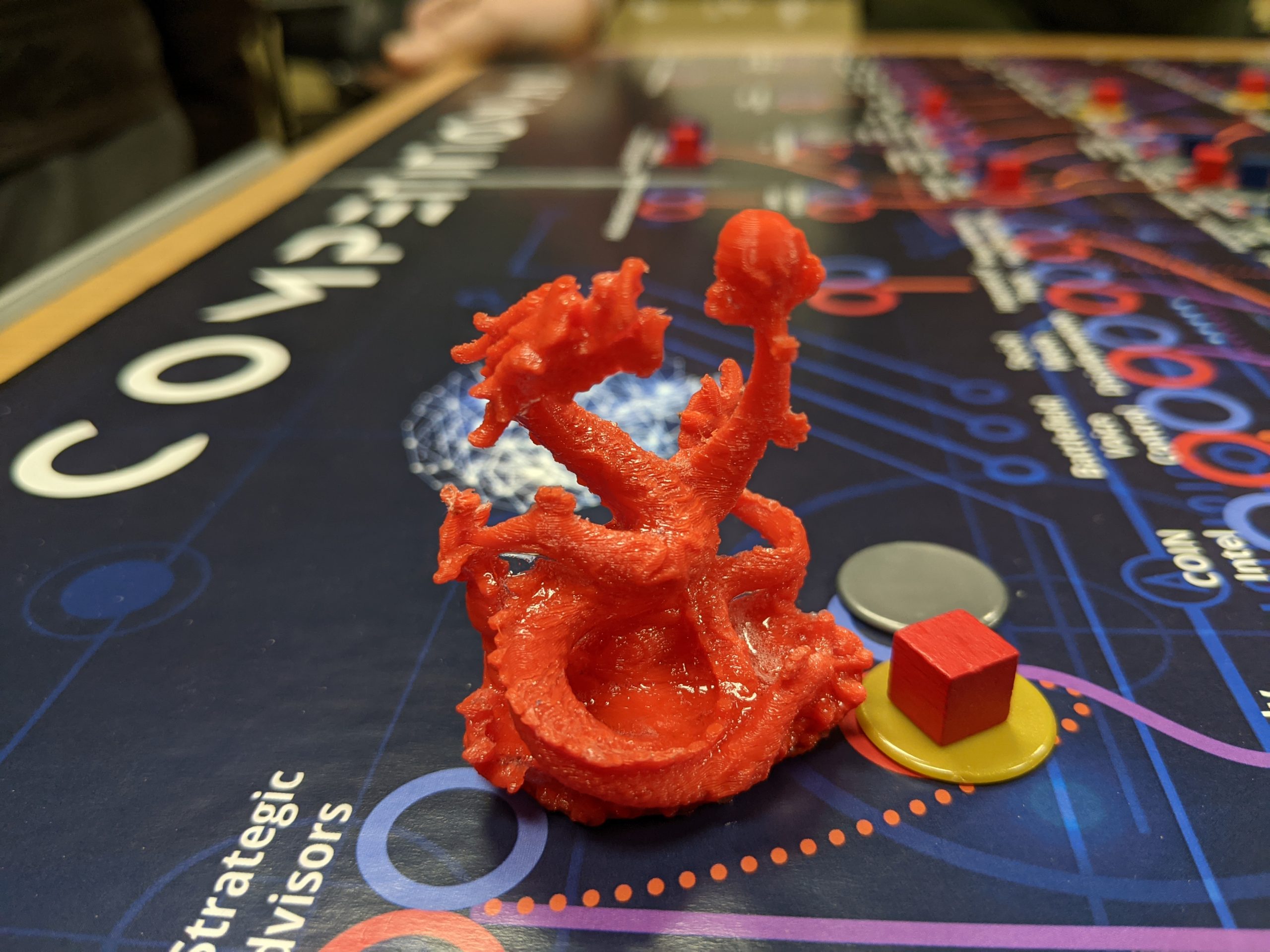
Competition: AI (Sasha Barkhaus, Andrew Olson, & Vikram Venkatram) is an education war game that begins in the present and extends into the near future of 10 years examining the competition between the United States and China over the development of military AI technologies. The game aims to educate players about near-future applications of AI, emphasize the need for long-term investment, and demonstrate the key relationship between the commercial sector and nations’ militaries.
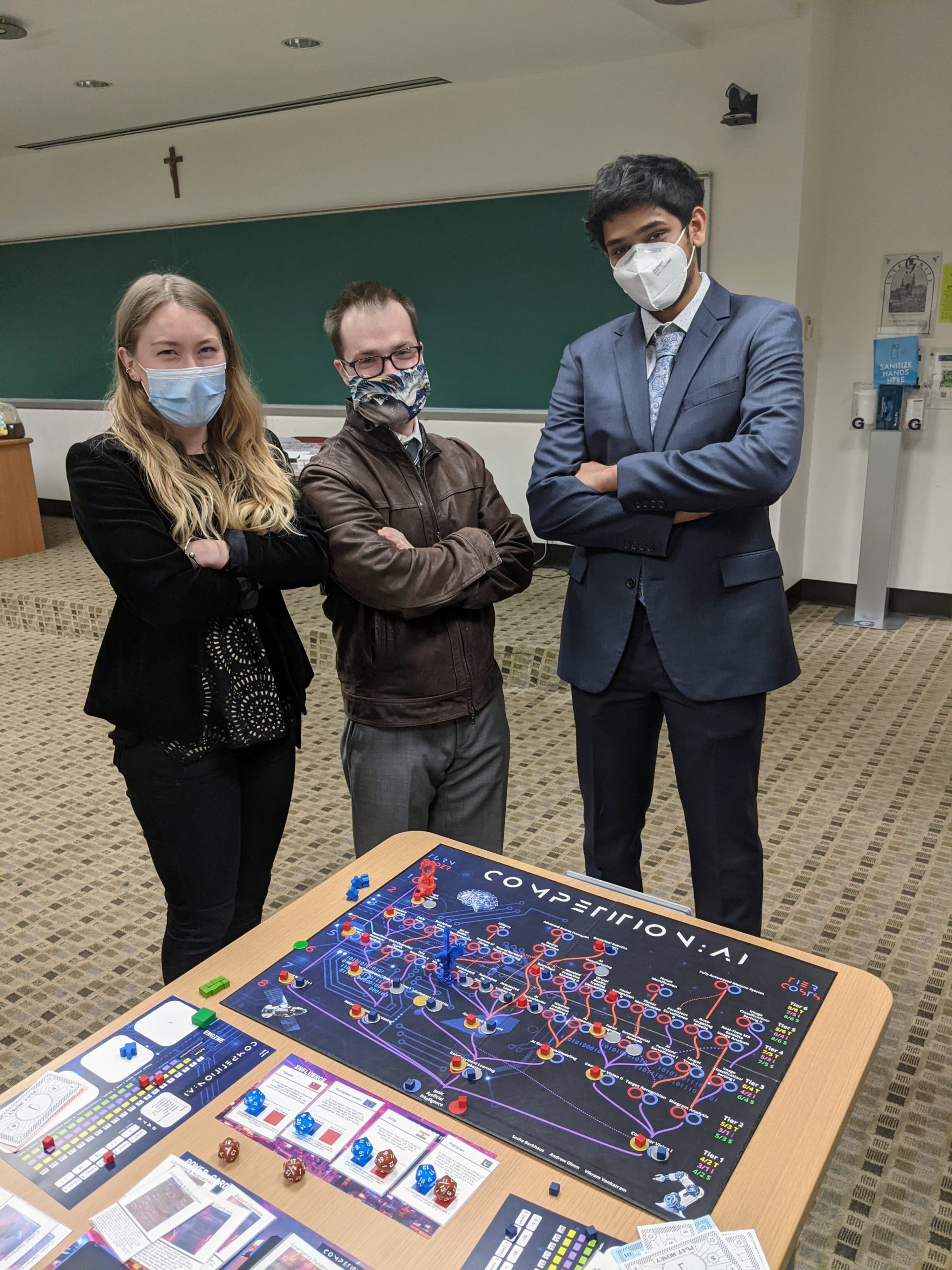
Splendid Failure: Postwar Reconstruction in Democratic Societies (Mark Dwyer, & Matthew Kirchman). In this game, the players explore the political dynamics of the American Reconstruction period, navigating a complex web of inter-and intra-party negotiations to win elections, pass policies, and develop a thriving postwar economy, all against the backdrop of random events and a white supremacist insurgency that attempts to thwart all efforts at social progress.
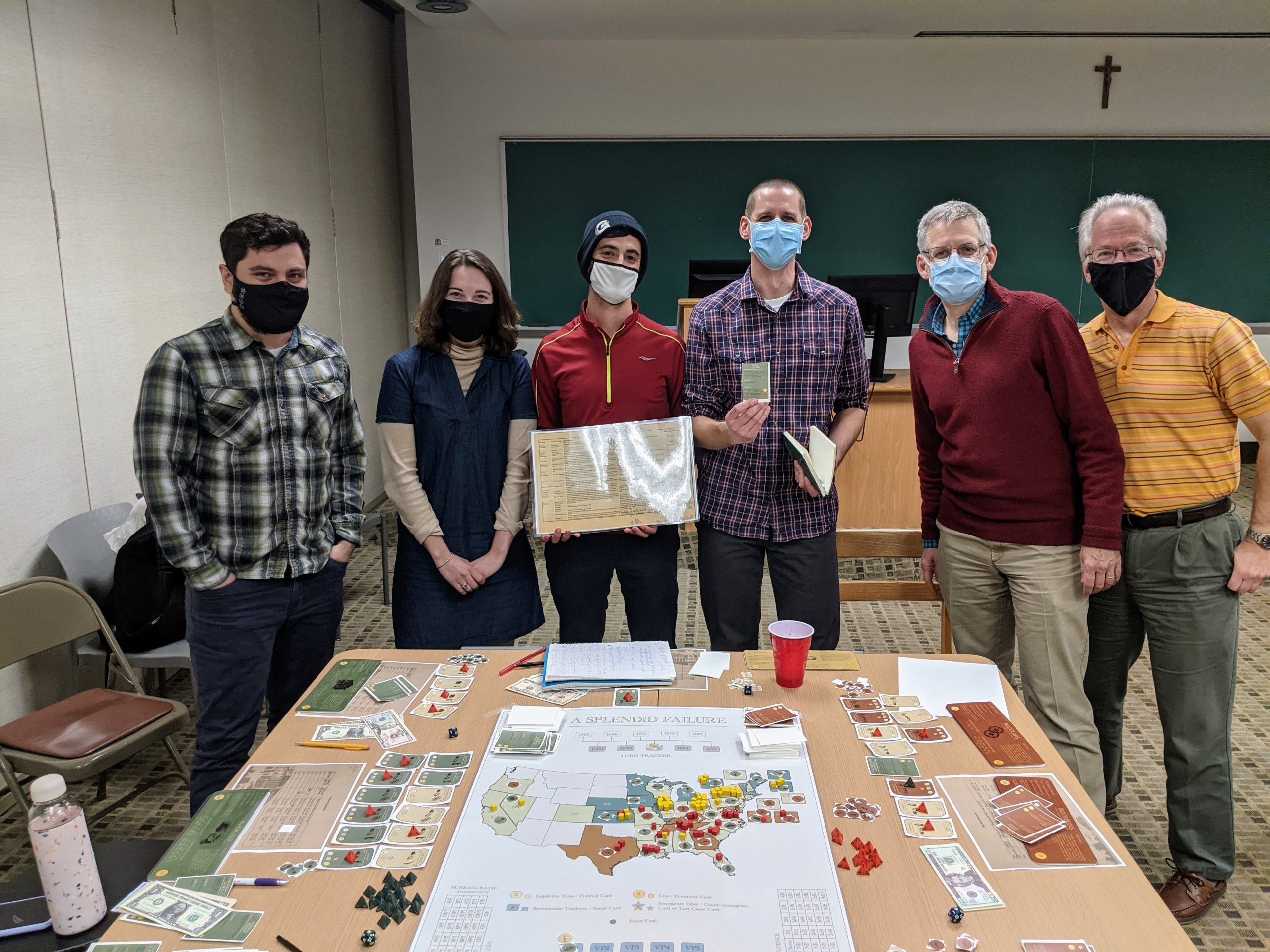
Banana Wars (Lexee Brill, Samantha Wong, & Asher Elkins) The objective for this game is for players to gain an appreciation of the difficulty of fighting asymmetric, ‘small wars’ abroad, with various degrees of cooperation with local populations. By playing as either the United States or a Latin American country, players will be able to strategize according to their individualistic goals.
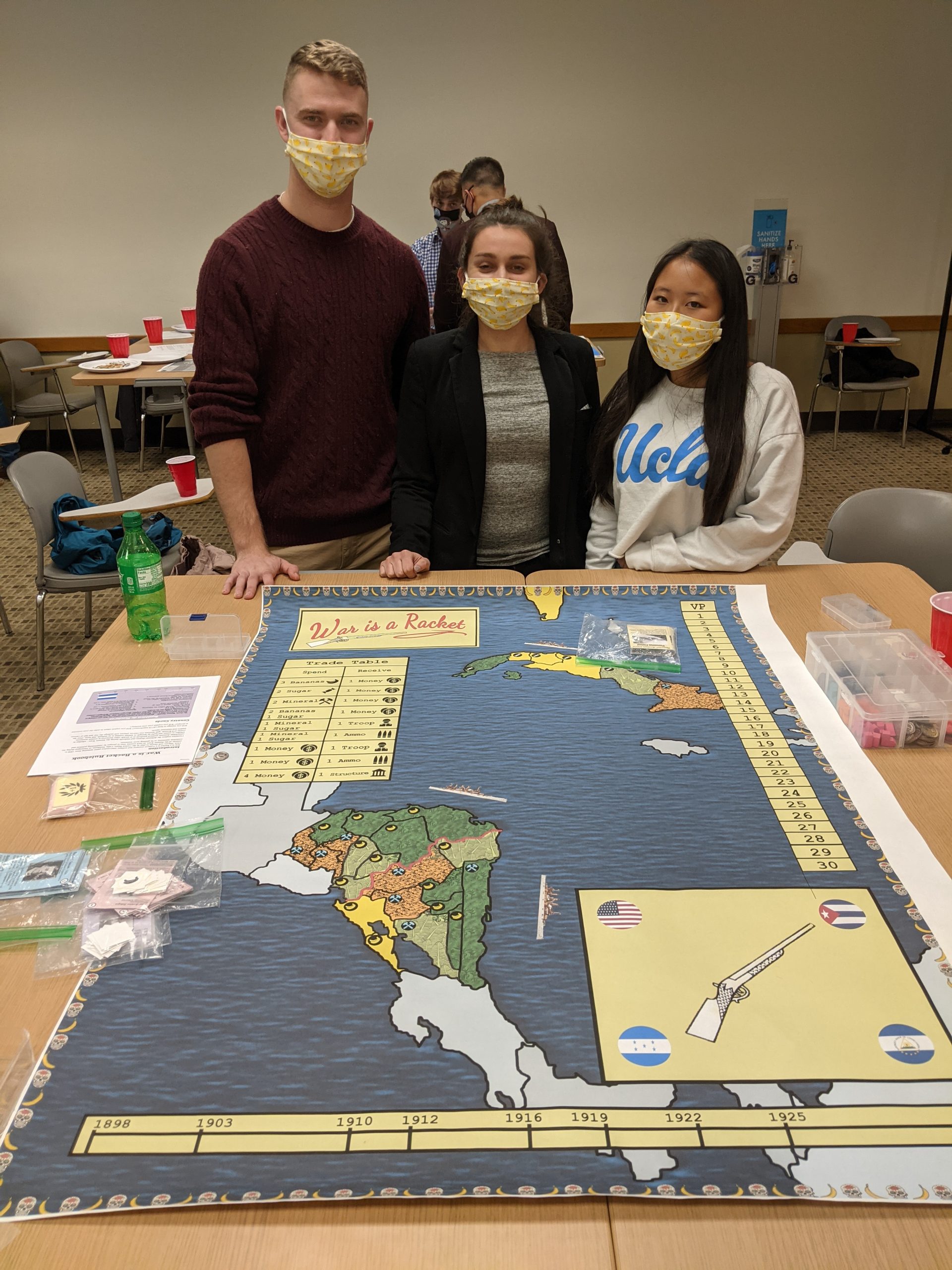
Thor’s Hammer (Jonathan Abshire, Jamie Hood & Zack Watson) Thor’s Hammer was designed for the staff of the U.S. Army Command and General Staff College (CGSC) and is intended for use by CGSC students. The fundamental learning objective of Thor’s Hammer is to demonstrate the fundamental challenges of providing logistics support to ground combat units engaged in large-scale combat operations in an austere environment.
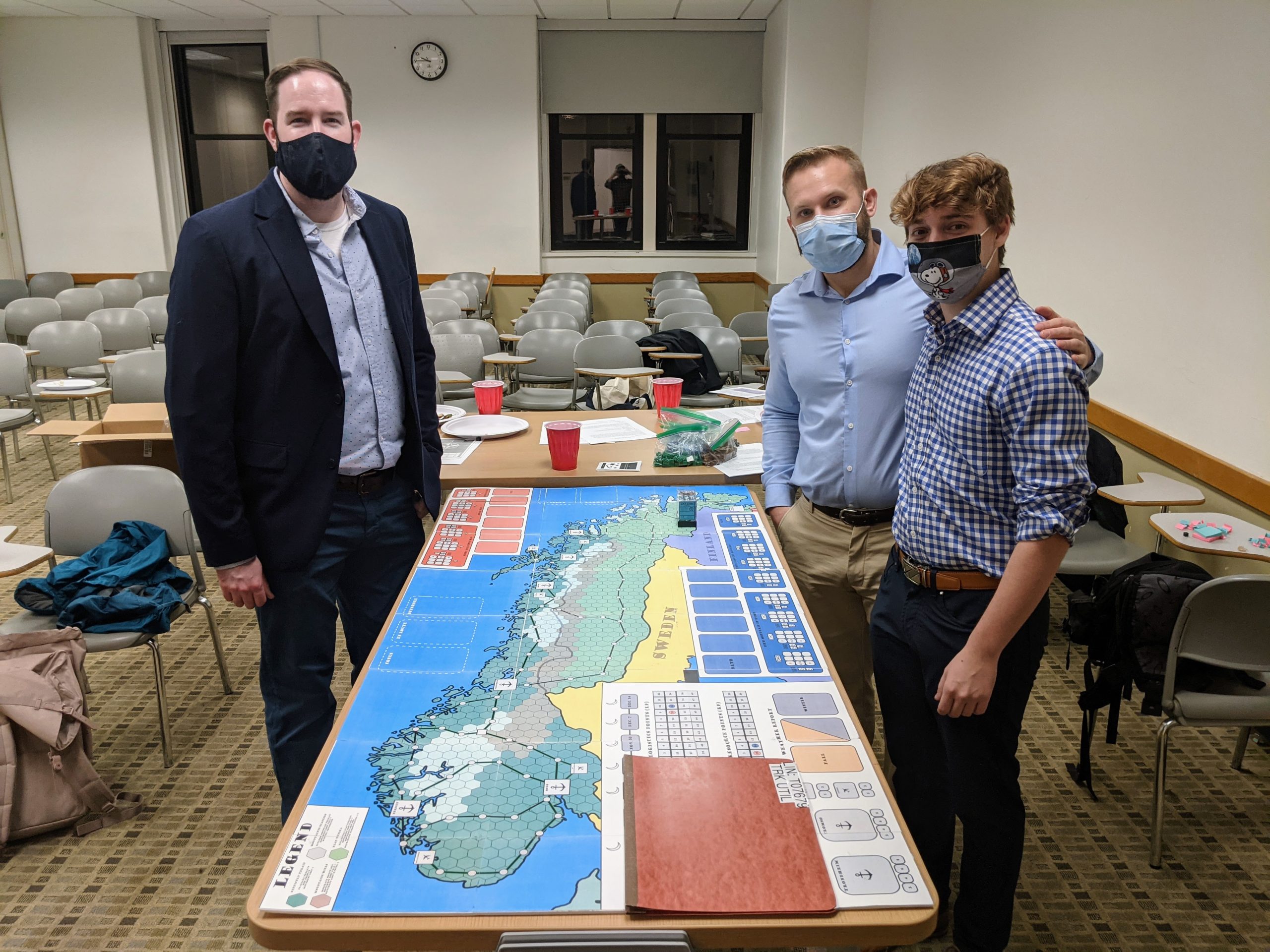
I was asked to play Thor’s Hammer and I was very impressed with the game in both their approach to design and subject matter. As a DoD wargamer and former loggie I wanted to check this one out. I felt that the students were able to show how logistics affect military operations in a manner where even a novice can see the correlation between the two distinct disciplines in the operational environment. I know my compatriots at Ft Leavenworth will love the final product when it gets turned over to them in 2022. I hope I gave them some good feedback and I would love to get another chance to play the game again.
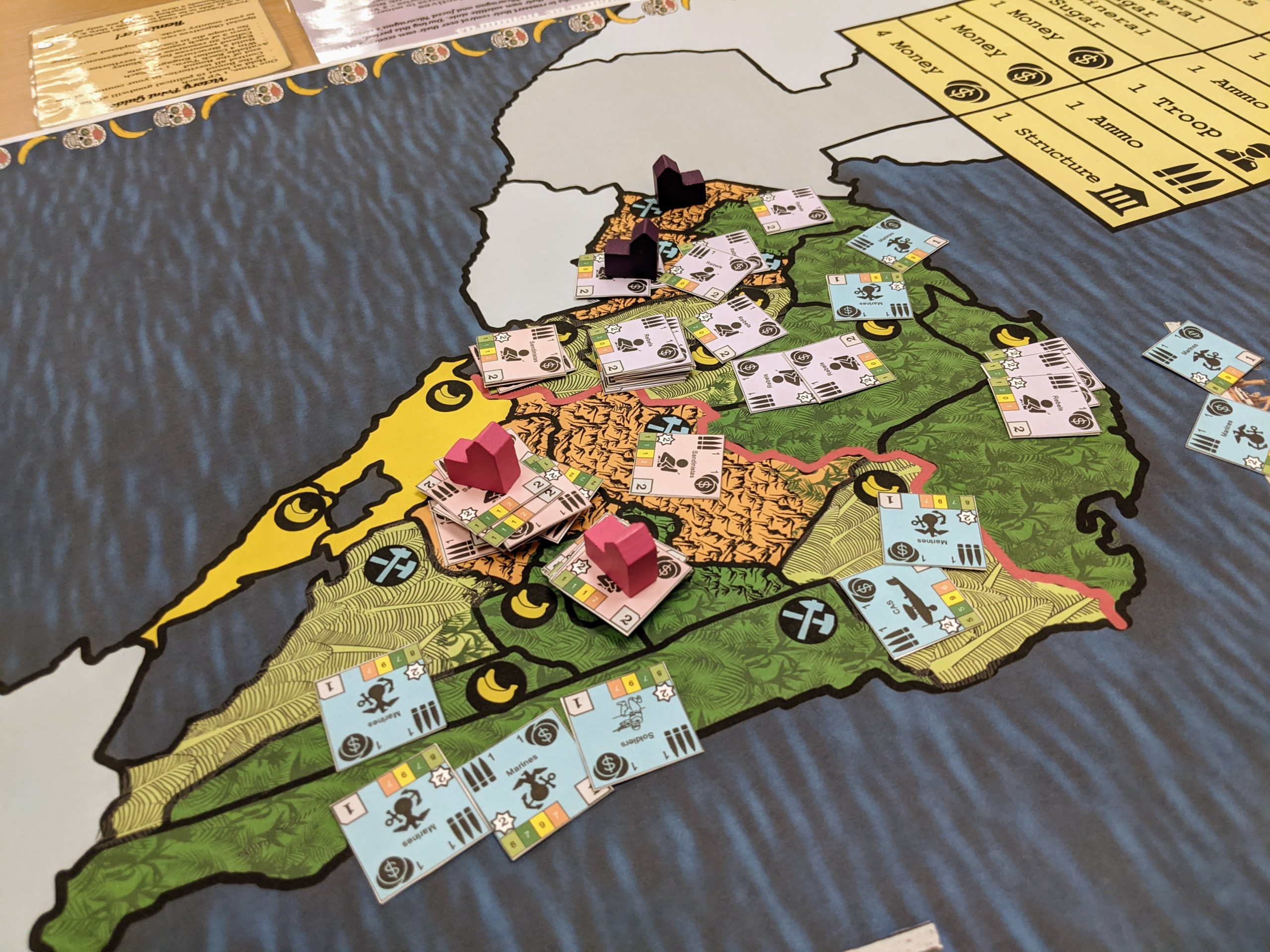
I did look over the other three games as well and spoke to the designers of Competition AI and I was impressed with the background research they did on such a difficult subject, and I hope to have them on a podcast soon. The other two games looked impressive as well and I am hoping to get a chance to play Banana Wars sometime in the new year.
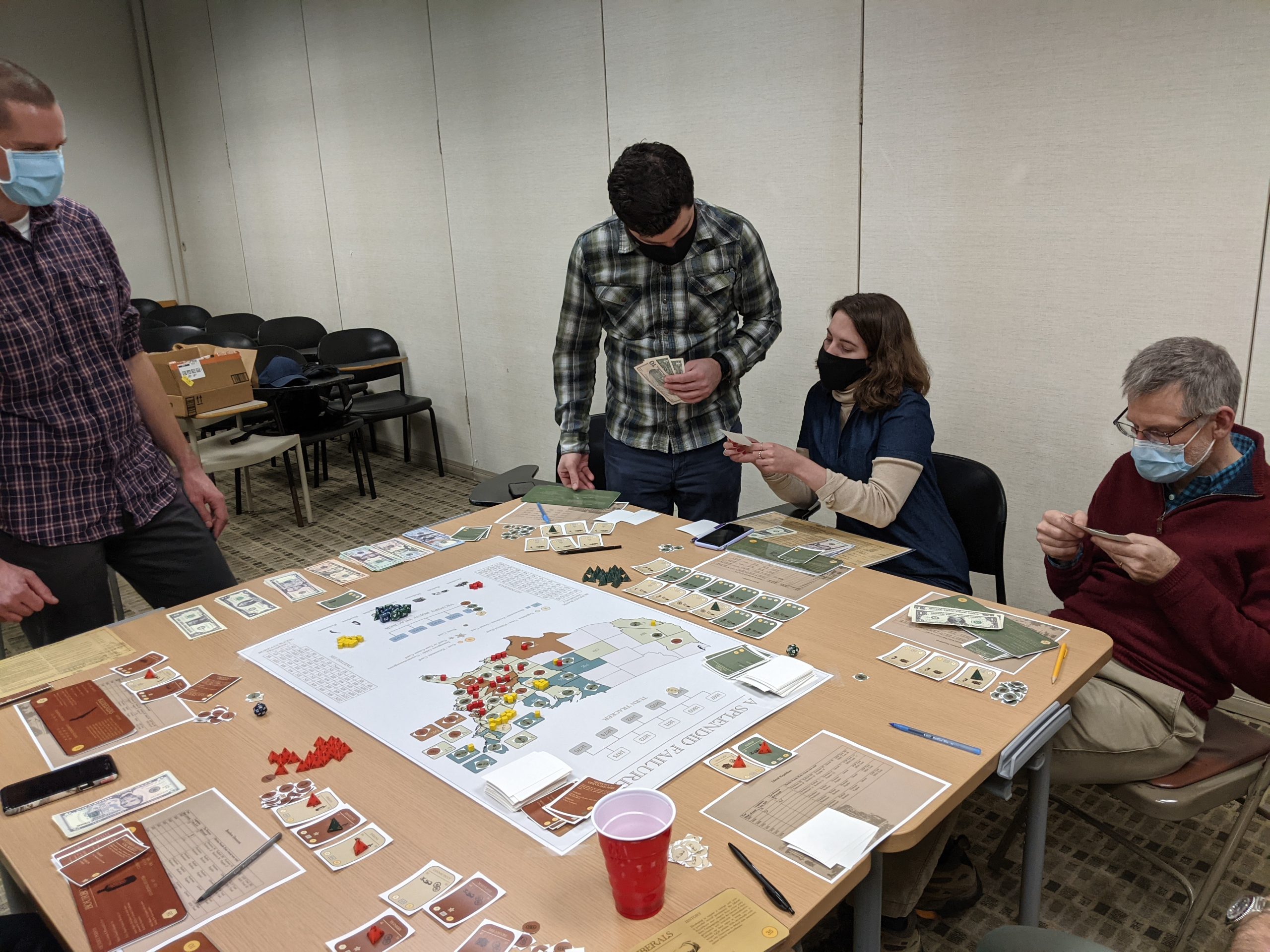
I was able to get copies of the journals and rules the students have been submitting as they mature their designs and I was impressed again with the background research, attention to detail, and the mechanics they used to bring the elements of their designs to the game table.
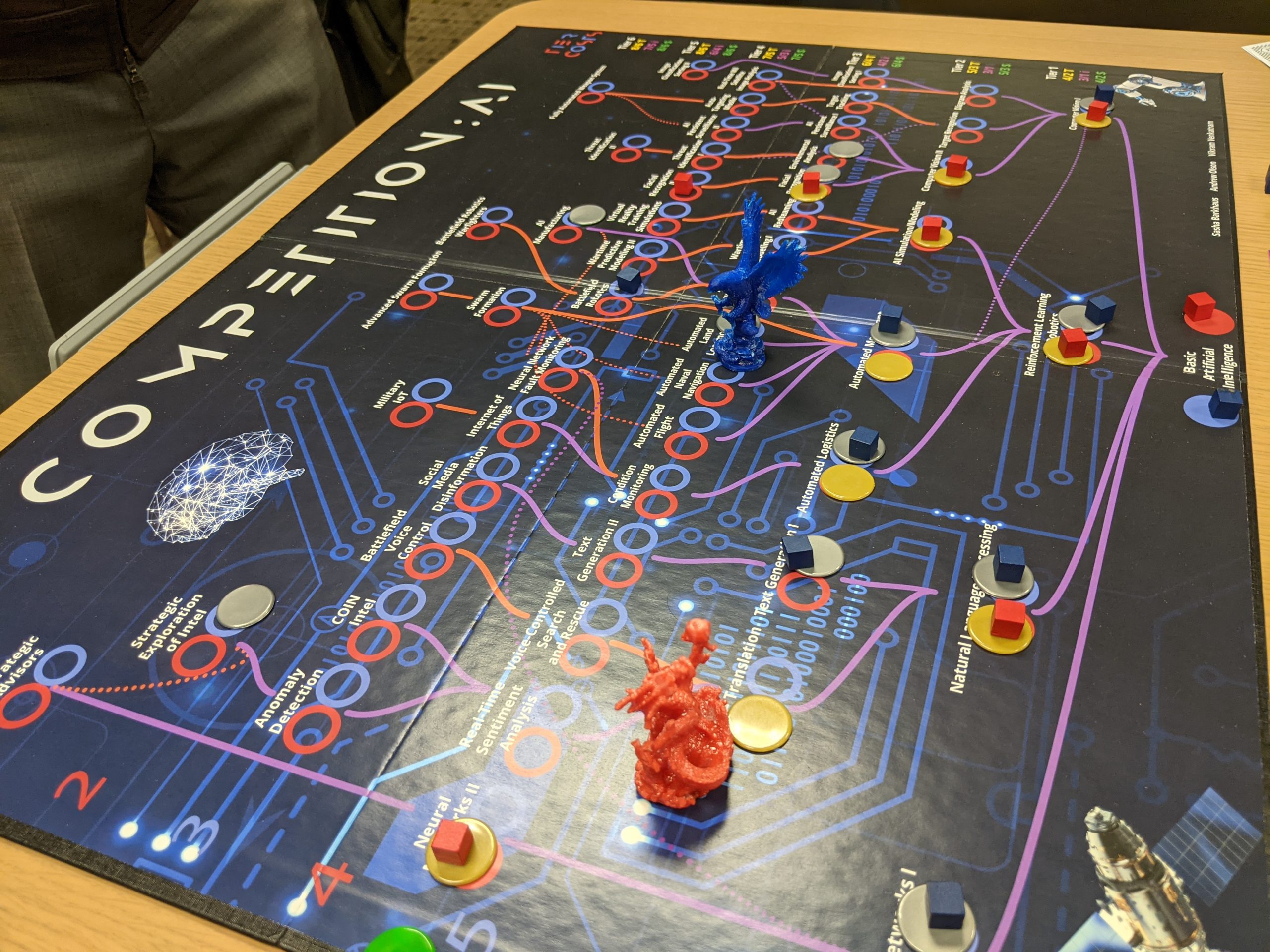
One aspect that was reinforced at the event was that game design is hard. Many hobby gamers claim on social media that they could design and develop the next great wargame. I invite them to try because few know how hard it is to get even a mediocre game published. Many games take years from initial concept to production and the students of this class are on a much tighter timeline with only a school semester to get their designs ready for a serious playtest.
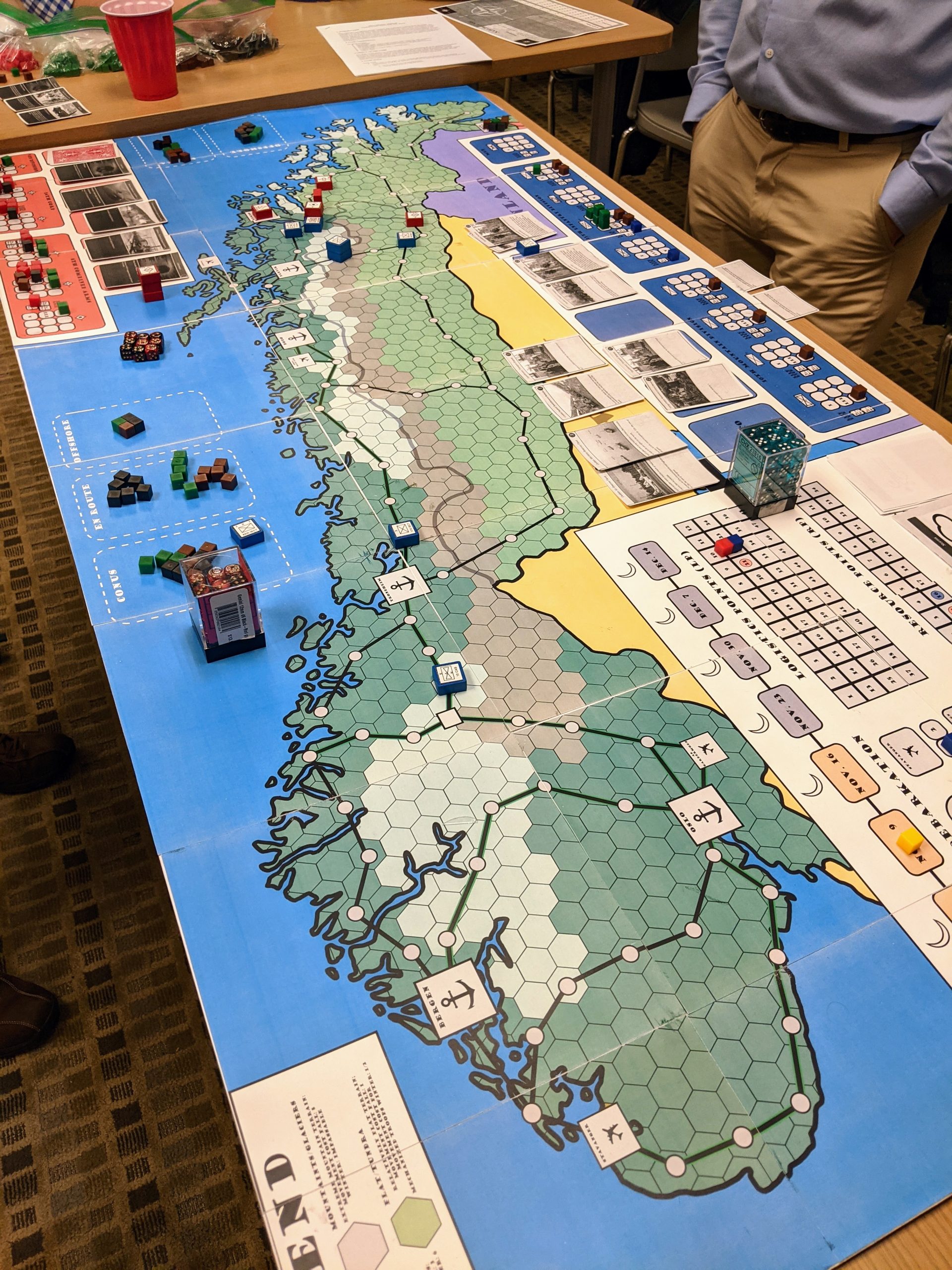
I know that the designers will take the feedback from the invited “experts” and continue to improve their designs and I hope one day publish these interesting games. From my conversations with the students I know that the future of defense wargaming is in good hands and I look forward to either continue to work, or one day working with these professionals in the future.
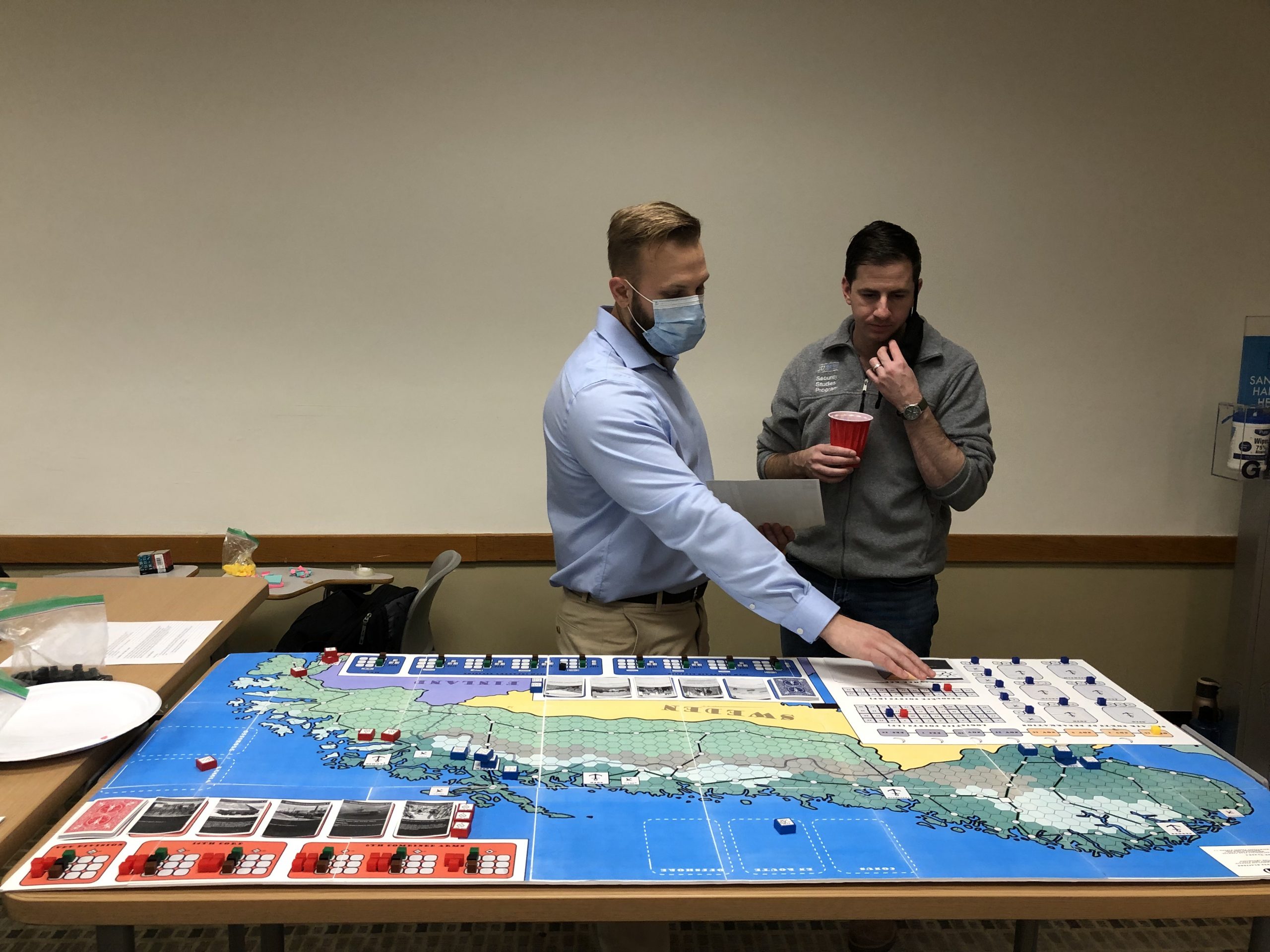
If you want to learn more about the wargaming going on at Georgetown, I recommend checking out the . GUWS is another program run by Professor Bae does a lot to grow a new crop of wargamers as well as to inform all game developers on how to perfect the art and science of wargaming.

This is exciting to read and I’m impressed with attractive physical production for all the submissions; it makes me want to play all of them. Kudos to Professor Bae, his team of expert wargamers, and–most of all–his students who labored so hard!